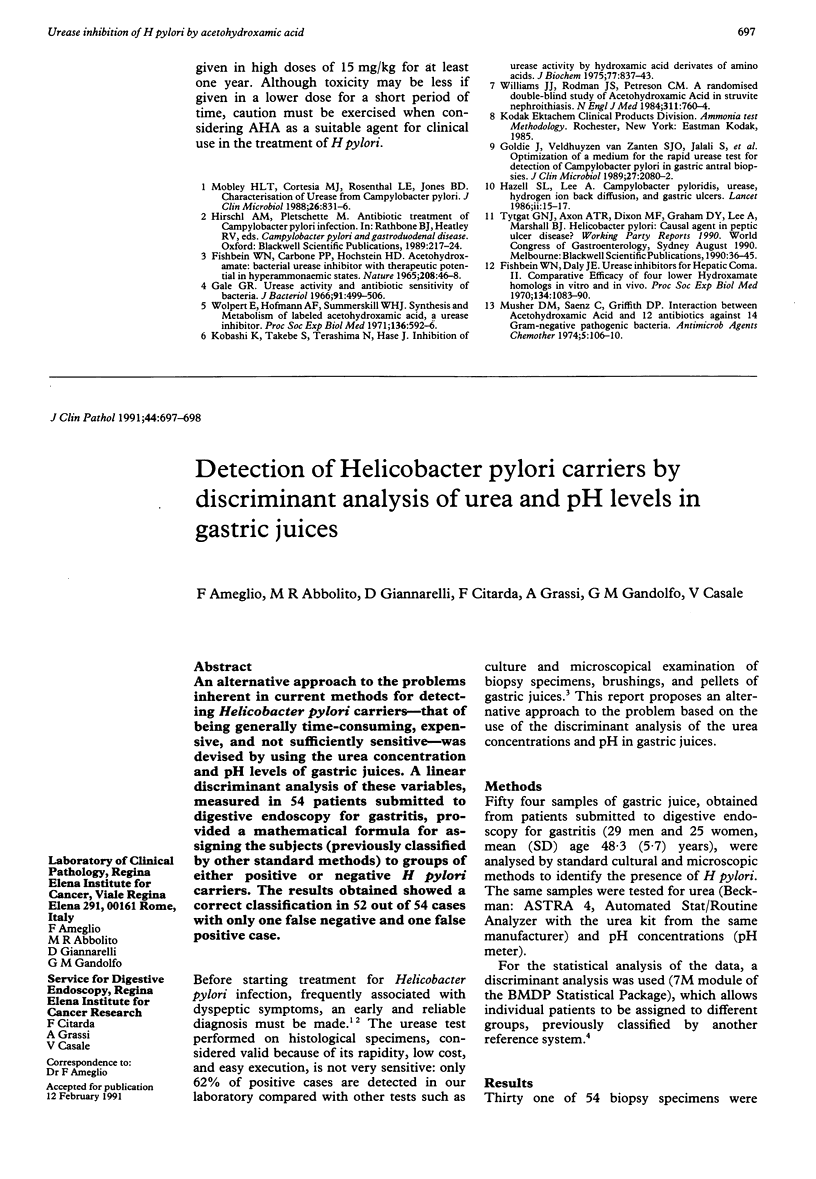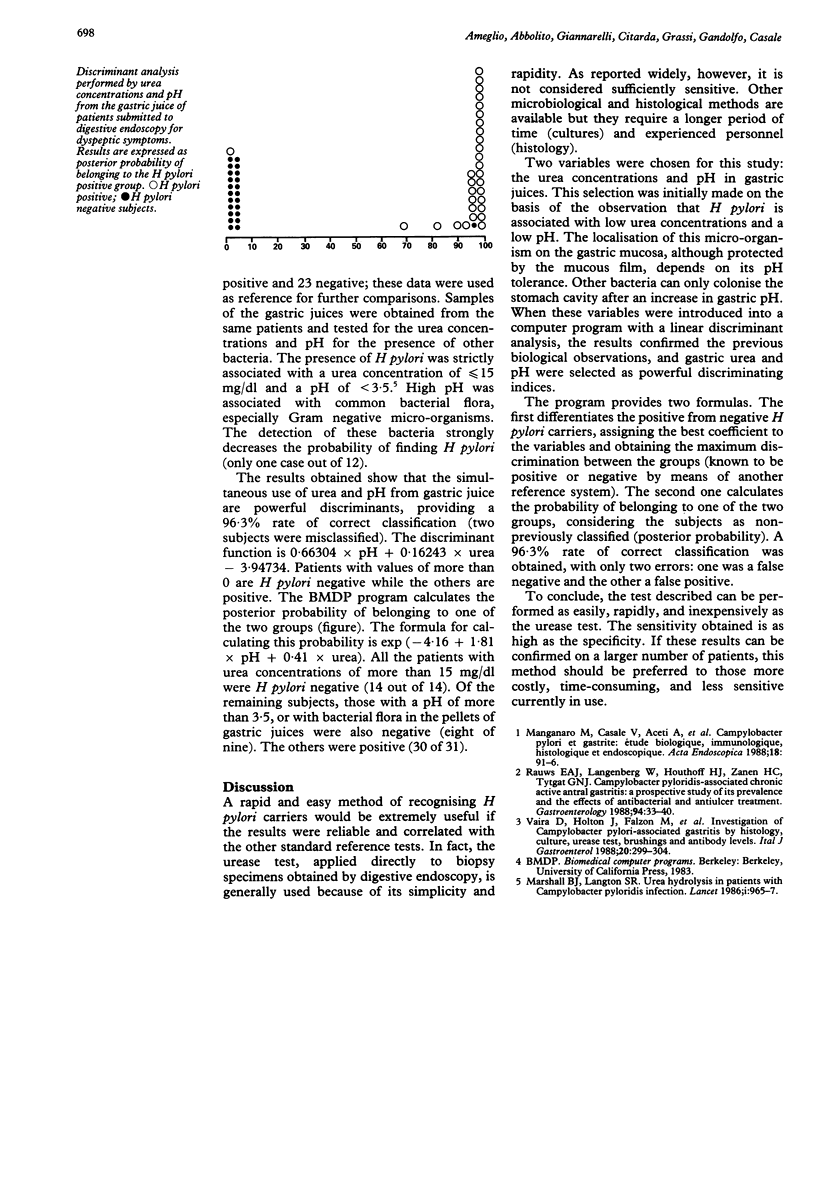Abstract
An alternative approach to the problems inherent in current methods for detecting Helicobacter pylori carriers--that of being generally time-consuming, expensive, and not sufficiently sensitive--was devised by using the urea concentration and pH levels of gastric juices. A linear discriminant analysis of these variables, measured in 54 patients submitted to digestive endoscopy for gastritis, provided a mathematical formula for assigning the subjects (previously classified by other standard methods) to groups of either positive or negative H pylori carriers. The results obtained showed a correct classification in 52 out of 54 cases with only one false negative and one false positive case.
Full text
PDF

Selected References
These references are in PubMed. This may not be the complete list of references from this article.
- Marshall B. J., Langton S. R. Urea hydrolysis in patients with Campylobacter pyloridis infection. Lancet. 1986 Apr 26;1(8487):965–966. doi: 10.1016/s0140-6736(86)91060-3. [DOI] [PubMed] [Google Scholar]
- Rauws E. A., Langenberg W., Houthoff H. J., Zanen H. C., Tytgat G. N. Campylobacter pyloridis-associated chronic active antral gastritis. A prospective study of its prevalence and the effects of antibacterial and antiulcer treatment. Gastroenterology. 1988 Jan;94(1):33–40. [PubMed] [Google Scholar]


